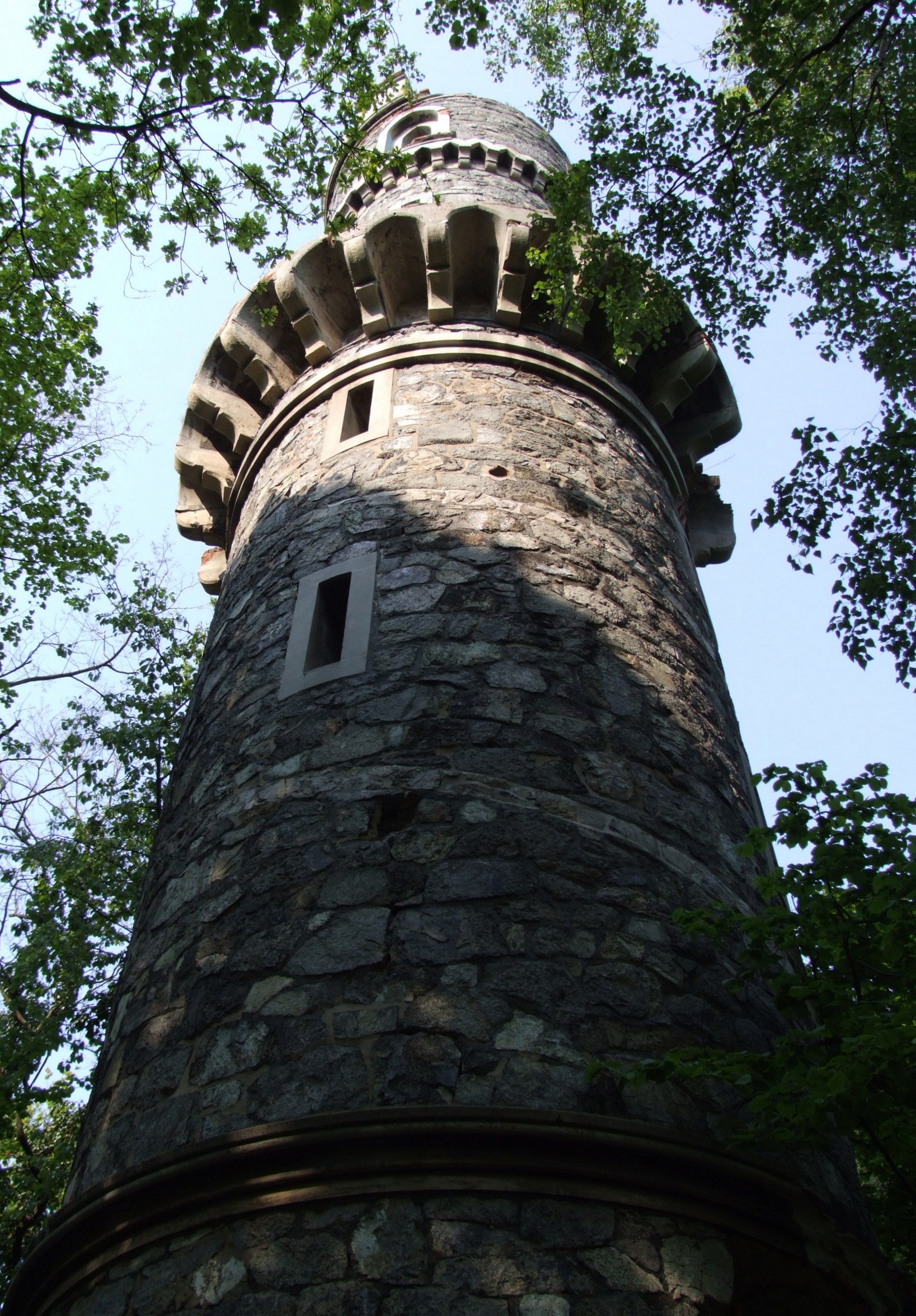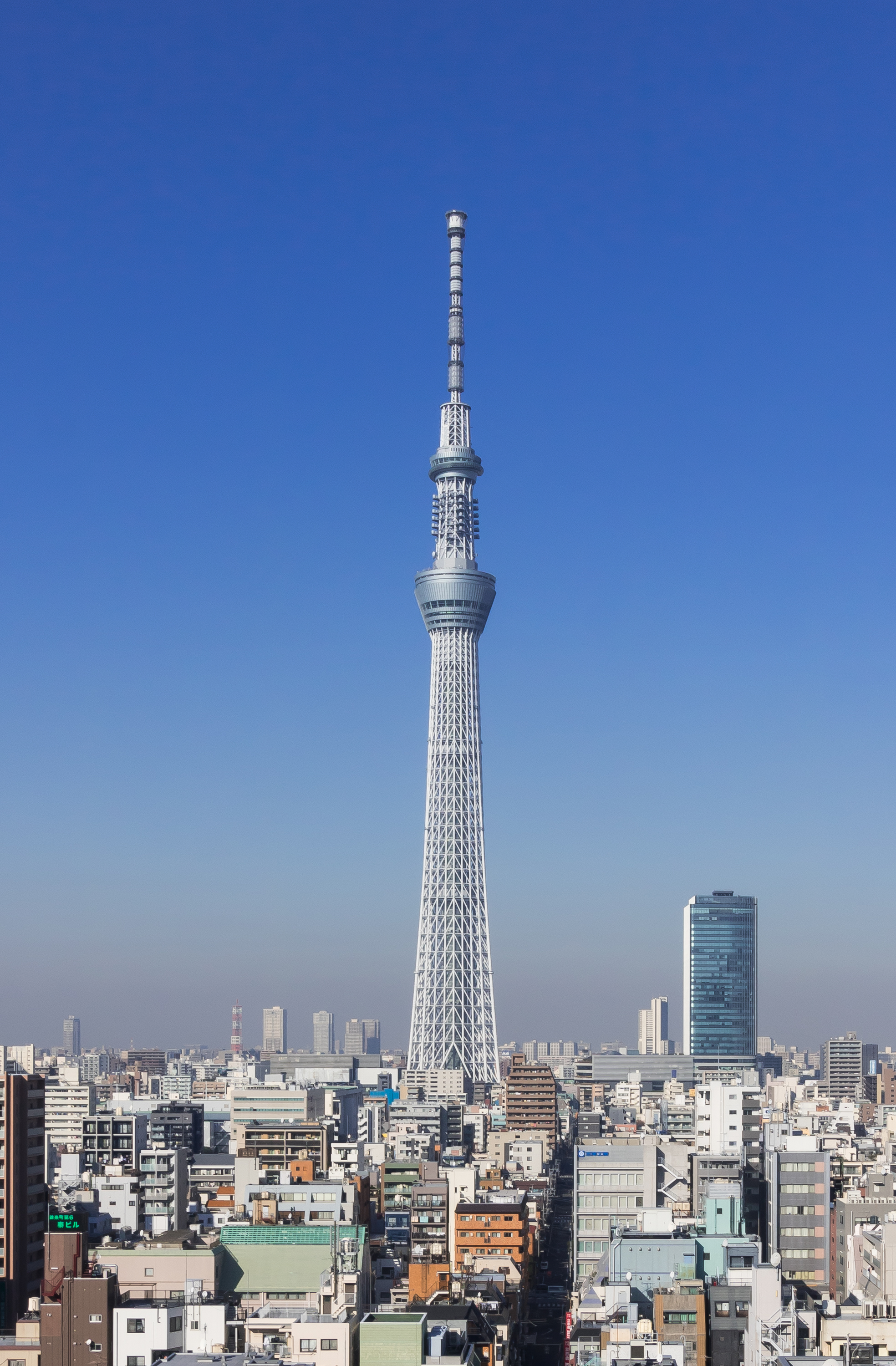|
Salzgitter Bismarck Tower
The Salzgitter Bismarck Tower is an observation tower completed in 1900 in Salzgitter, Germany. Unlike most other Bismarck towers, it does not consist of all-stone design, but instead has a base of bricks with a lattice tower on top. On one side, it resembles an Eiffel Tower with a bow between its feet. The Harz Club voted to build the Bismarck Tower at Salzgitter on 8 May 1899. The same day, the site was chosen and bought by the forest cooperative of Gitter. On 10 September 1899, construction started. The work was carried out by Hoenerbach of Salzgitter and the Weule/Alt engineering company. As the construction licence was not awarded until 12 January 1900, the tower was not finished until 12 August 1900. On 21 July 1900 it was decided to establish a Bismarck museum. Until 1965, a victory trophy was displayed at the entrance. The tower was renovated in 1990 and 2002. See also * List of towers Several extant building fulfill the engineering definition of a tower: "a tall ... [...More Info...] [...Related Items...] OR: [Wikipedia] [Google] [Baidu] |
Bismarckturm (Salzgitter-Bad)
A Bismarck tower (german: Bismarckturm) is a specific type of monument built according to a more or less standard model across Germany to honour its first chancellor, Otto von Bismarck (d. 1898). A total of 234 of these towers were inventoried by Kloss and Seele in 2007Pohlsander, Hans A. ''National Monuments and Nationalism in 19th Century Germany'', Oxford: Lang, 2008, p. 226-227 but more have been discovered since making the total around 240. These towers were built between 1869''Der älteste Bismarckturm von 1869'' at www.bismarcktuerme.de. Retrieved 28 July 2016. and 1934 and some 173 remain today. Quite a few of these towers, including all 47 based on |
Observation Tower
An observation tower is a structure used to view events from a long distance and to create a full 360 degree range of vision to conduct long distance observations. Observation towers are usually at least tall and are made from stone, iron, and wood. Many modern towers are also used as TV towers, restaurants, or churches. The towers first appeared in the ancient world, as long ago as the Babylonian Empire. Observation towers that are used as guard posts or observation posts over an extended period to overlook an area are commonly called watchtowers instead. Construction and usage Observation towers are an easily visible sight on the countryside, as they must rise over trees and other obstacles to ensure clear vision. Older control rooms have often been likened to medieval chambers. The heavy use of stone, iron, and wood in their construction helps to create this illusion. Modern towers frequently have observation decks or terraces with restaurants or on the roof of mountain st ... [...More Info...] [...Related Items...] OR: [Wikipedia] [Google] [Baidu] |
Salzgitter
Salzgitter (; Eastphalian: ''Soltgitter'') is an independent city in southeast Lower Saxony, Germany, located between Hildesheim and Braunschweig. Together with Wolfsburg and Braunschweig, Salzgitter is one of the seven ''Oberzentren'' of Lower Saxony (roughly equivalent to a metropolitan area). With 101,079 inhabitants and (as of 31 December 2015), its area is the largest in Lower Saxony and one of the largest in Germany. Salzgitter originated as a conglomeration of several small towns and villages, and is today made up of 31 boroughs, which are relatively compact conurbations with wide stretches of open country between them. The main shopping street of the young city is in the borough of Lebenstedt, and the central business district is in the borough of Salzgitter-Bad. The city is connected to the Mittellandkanal and the Elbe Lateral Canal by a distributary. The nearest metropolises are Braunschweig, about to the northeast, and Hanover, about to the northwest. The population ... [...More Info...] [...Related Items...] OR: [Wikipedia] [Google] [Baidu] |
Germany
Germany,, officially the Federal Republic of Germany, is a country in Central Europe. It is the second most populous country in Europe after Russia, and the most populous member state of the European Union. Germany is situated between the Baltic and North seas to the north, and the Alps to the south; it covers an area of , with a population of almost 84 million within its 16 constituent states. Germany borders Denmark to the north, Poland and the Czech Republic to the east, Austria and Switzerland to the south, and France, Luxembourg, Belgium, and the Netherlands to the west. The nation's capital and most populous city is Berlin and its financial centre is Frankfurt; the largest urban area is the Ruhr. Various Germanic tribes have inhabited the northern parts of modern Germany since classical antiquity. A region named Germania was documented before AD 100. In 962, the Kingdom of Germany formed the bulk of the Holy Roman Empire. During the 16th ce ... [...More Info...] [...Related Items...] OR: [Wikipedia] [Google] [Baidu] |
Lattice Tower
A lattice tower or truss tower is a freestanding vertical framework tower. This construction is widely used in transmission towers carrying high voltage electric power lines, in radio masts and towers (a self-radiating tower or as a support for aerials) and in observation towers. Its advantage is good shear strength at a much lower weight than a tower of solid construction would have as well as lower wind resistance. In structural engineering the term ''lattice tower'' is used for a freestanding structure, while a ''lattice mast'' is a guyed mast supported by guy lines. Lattices of triangular (3-sided) cross-section are most common, particularly in North America. Square (4-sided) lattices are also widely used and are most common in Eurasia. Lattice towers are often designed as either a space frame or a hyperboloid structure. Before 1940, they were used as radio transmission towers especially for short and medium wave. Occasionally lattice towers consisting of wood were utilized. T ... [...More Info...] [...Related Items...] OR: [Wikipedia] [Google] [Baidu] |
Eiffel Tower
The Eiffel Tower ( ; french: links=yes, tour Eiffel ) is a wrought-iron lattice tower on the Champ de Mars in Paris, France. It is named after the engineer Gustave Eiffel, whose company designed and built the tower. Locally nicknamed "''La dame de fer''" (French for "Iron Lady"), it was constructed from 1887 to 1889 as the centerpiece of the 1889 World's Fair. Although initially criticised by some of France's leading artists and intellectuals for its design, it has since become a global cultural icon of France and one of the most recognisable structures in the world. The Eiffel Tower is the most visited monument with an entrance fee in the world: 6.91 million people ascended it in 2015. It was designated a '' monument historique'' in 1964, and was named part of a UNESCO World Heritage Site ("Paris, Banks of the Seine") in 1991. The tower is tall, about the same height as an 81- building, and the tallest structure in Paris. Its base is square, measuring on each sid ... [...More Info...] [...Related Items...] OR: [Wikipedia] [Google] [Baidu] |
Harz Club
The Harz Club (german: Harzklub) is club dedicated to maintaining the traditions of the Harz mountains in Germany and looking after the walking trails in the Harz. It was founded in 1886 in Seesen and, today, has about 16,000 members in some 90 branches. History The Harz Club was founded on 8 August 1886 in Seesen. The railway director, Albert Schneider, was its first chairman. One of the co-founders was Carl Reuß. Its first task was to open up the Harz to walkers and tourists. Later, numerous local history groups were started and it took on the maintenance of Harz traditions. Nature conservation was added to its articles as an important aim in 1907. Before the outbreak of the Second World War membership stood at almost 20,000 in 120 branches. Following the division of the Harz, the development of the Harz Nature Park became the priority within the western zone. In East Germany the Harz Club was banned as an organisation, similar functions were entrusted to the subordina ... [...More Info...] [...Related Items...] OR: [Wikipedia] [Google] [Baidu] |
List Of Towers
Several extant building fulfill the engineering definition of a tower: "a tall human structure, always taller than it is wide, for public or regular operational access by humans, but not for living in or office work, and are ''self-supporting'' or ''free-standing'', which means no guy-wires for support." This definition excludes continuously habitable buildings and skyscrapers as well as radio and TV masts. Also excluded because they are not designed for public or regular operational access are bridge towers or pylons, wind turbines, chimneys, transmission towers, sculptures and most large statues and obelisks. Towers are most often built to use their height for various purposes, and can stand alone or as part of a larger structure. Some common purposes are for telecommunications, and as a viewing platform. The Tokyo Skytree, completed in February 2012, is , making it the tallest tower, and third-tallest free-standing structure in the world. Entirely self-supported towers ... [...More Info...] [...Related Items...] OR: [Wikipedia] [Google] [Baidu] |
Towers Completed In 1900
A tower is a tall structure, taller than it is wide, often by a significant factor. Towers are distinguished from masts by their lack of guy-wires and are therefore, along with tall buildings, self-supporting structures. Towers are specifically distinguished from buildings in that they are built not to be habitable but to serve other functions using the height of the tower. For example, the height of a clock tower improves the visibility of the clock, and the height of a tower in a fortified building such as a castle increases the visibility of the surroundings for defensive purposes. Towers may also be built for observation, leisure, or telecommunication purposes. A tower can stand alone or be supported by adjacent buildings, or it may be a feature on top of a larger structure or building. Etymology Old English ''torr'' is from Latin ''turris'' via Old French ''tor''. The Latin term together with Greek τύρσις was loaned from a pre-Indo-European Mediterranean language, ... [...More Info...] [...Related Items...] OR: [Wikipedia] [Google] [Baidu] |
Buildings And Structures In Salzgitter
A building, or edifice, is an enclosed structure with a roof and walls standing more or less permanently in one place, such as a house or factory (although there's also portable buildings). Buildings come in a variety of sizes, shapes, and functions, and have been adapted throughout history for a wide number of factors, from building materials available, to weather conditions, land prices, ground conditions, specific uses, prestige, and aesthetic reasons. To better understand the term ''building'' compare the list of nonbuilding structures. Buildings serve several societal needs – primarily as shelter from weather, security, living space, privacy, to store belongings, and to comfortably live and work. A building as a shelter represents a physical division of the human habitat (a place of comfort and safety) and the ''outside'' (a place that at times may be harsh and harmful). Ever since the first cave paintings, buildings have also become objects or canvasses of much artistic ... [...More Info...] [...Related Items...] OR: [Wikipedia] [Google] [Baidu] |
Bismarck Towers
A Bismarck tower (german: Bismarckturm) is a specific type of monument built according to a more or less standard model across Germany to honour its first chancellor, Otto von Bismarck (d. 1898). A total of 234 of these towers were inventoried by Kloss and Seele in 2007Pohlsander, Hans A. ''National Monuments and Nationalism in 19th Century Germany'', Oxford: Lang, 2008, p. 226-227 but more have been discovered since making the total around 240. These towers were built between 1869''Der älteste Bismarckturm von 1869'' at www.bismarcktuerme.de. Retrieved 28 July 2016. and 1934 and some 173 remain today. Quite a few of these towers, including all 47 based on |





